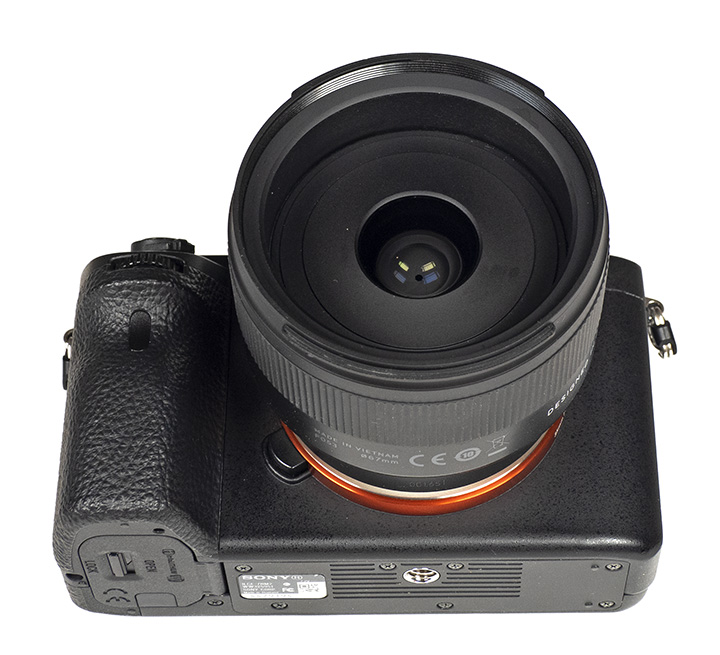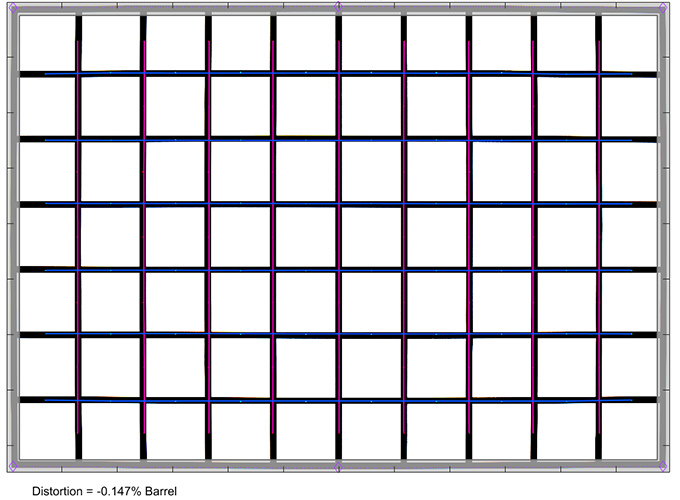by Klaus Schroiff, published July 2021
Introduction
It seems that comparatively slow-speed “budget” prime lenses are all the rage these days. A few years ago, Samyang was probably the one starting the segment with a number of affordable (semi-)pancake lenses. This was followed by Sigma with a more premium approach. In late 2019, Tamron entered the scene with three identical-looking primes – a 20mm f/2.8, 24mm f/2.8, and a 35mm f/2.8. Traditionally, Tamron is more of a mid-tier player but the gang of 3 is clearly budget-oriented. We’ll review them all in the next few weeks and let’s start with the Tamron 35mm f/2.8 Di III OSD M1:2, thus a moderate wide-angle. It’s available for as little as 250 USD/EUR.
For this amount of money, you can’t expect professional-grade quality. The chassis is made of average quality plastics based on a metal mount. The rubberized focus ring operates smoothly albeit it doesn’t scream premium. Surprisingly, the lens has some seals making it moisture resistant albeit there isn’t a word about dust protection. While the length of the lens doesn’t change during focusing, there’s a moving inner lens tube. It isn’t fully clear why Tamron designed the lens to be relatively long because this tube is quite deeply recessed by about 1.5cm. Instead, they could have made the lens shorter at the expense of having a protruding inner tube at certain focus distances. Rather than providing a conventional lens hood, Tamron went to a flat-faced “windowed” version. While we like this conceptually, it is worth noting that the hood (made in the Philippines) feels even cheaper than the lens (made in Vietnam).


The AF system uses a linear extension system. Typical for this focusing type, the AF speed is on the slow side but it’s at least noiseless. The same can’t be said about the aperture mechanism. When stopped down, you can hear that the camera is opening/closing the aperture during focusing operations. Once again, this has a cheap feel to it. As usual, manual focusing works “by-wire”. The precision is pretty good in this case. A specialty of the lens is its close-focusing capability. It can focus down to a max object magnification of 1:2 (hence the M1:2 in the lens name). An image stabilizer has not been implemented which is hardly surprising given the price point.

| Specifications | |
|---|---|
| Optical construction | 9 elements in 8 groups inc. 1x aspherical and 1x LD element |
| Number of aperture blades | 7 (rounded) |
| min. focus distance | 0.15m (max. magnification 1:2) |
| Dimensions | 64x73mmm |
| Weight | 210g |
| Filter size | 67mm |
| Hood | barrel-shaped with frame window (bayonet mount, supplied) |
| Other features | dust & moisture resistant |
| Mount | Sony FE |
Distortion
The Tamron 35mm f/2.8 Di III OSD M1:2 produces negligible barrel distortion in RAW files. There’s almost nothing to do for image auto-correction here … which differentiates it from its in-house cousins.


Vignetting
The vignetting characteristic is slightly higher than expected for such a lens. Without auto-correction, the light falloff is just short of 3EV (f-stops) at f/2.8. Stopping down reduces the vignetting down to a minimum of about 1EV at f/8.
Activated auto-correction reduces the issue substantially by 1.2EV (f-stops) at f/2.8. The remaining light falloff is still visible but not drastic anymore. The vignetting is acceptable from f/4 in this case.

MTF (resolution)
The Tamron is capable of delivering good sharpness at all relevant settings. This is especially true in the image center which is already superb at f/2.8 and beyond the resolution of the 42mp sensor used for testing. The near center is just slightly worse but still very good to excellent. The outer image field is pretty good, too. Stopping down results in a slight overall improvement with a peak at f/5.6. The broader center is tack sharp and the border/corner quality is very high here. As usual diffraction sets in from f/8. f/11 remains pretty usable but you shouldn’t stop down any further (on a high megapixel camera).
The centering quality of the tested sample was good. Field curvature is not an issue.
Please note that the MTF results are not directly comparable across the different systems!
Below is a simplified summary of the formal findings. The chart shows line widths per picture height (LW/PH) which can be taken as a measure for sharpness. If you want to know more about the MTF50 figures you may check out the corresponding Imatest Explanations

Chromatic Aberrations (CAs)
Lateral CAs are very low with an average CA pixel width of 0.3-0.4px at the image borders. Auto-correction can take care of rest anyway.

Bokeh
A 35mm f/2.8 doesn’t qualify as overly fast by prime lens standards but you can achieve a decent amount of object isolation at shorter focus distances at least.
Out-of-focus highlights are circular in the center zone at f/2.8. However, the inner zone of the discs is a bit nervous. The circular shape is maintained at f/4 but the more edgy aperture shape is getting very obvious from f/5.6 onward.

The following image illustrates the focus transition towards the background. It’s a very difficult, contrasty (crop of a) scene and, while not perfect, decent for a wide-angle lens.

Sunstars
The Tamron lens produces fan-like sunstars as you can see below (taken at f/11).

The circular shape deteriorates rapidly beyond the dead center and “cat eyes” are obvious at the borders/corners. Stopped down to f/4 broadens the zone of perfectly circular discs but the discs in the outer image field have not improved yet. This is better at f/5.6 but the discs have transitioned to polygons by then.



Competition
There are numerous 35mm options available in E-mount. The most obvious competitors are probably the Sony/Zeiss FE T* 35mm f/2.8 ZA (in the center below) and the Samyang AF 35mm f/2.8 (to the right). The Zeiss lens is, of course, substantially more expensive. While not necessarily better, it feels somewhat more sturdy while also being smaller. We haven’t tested the Samyang yet but it seems to be pretty good and it is, by quite a margin, more compact still. This visual comparison should also make it obvious how big the Tamron is vs other lenses in this speed class.

Visual comparison courtesy of camerasize.com.
The Tamron 35mm f/2.8 Di III OSD M1:2 is a high-quality lens in terms of its optical performance. The center sharpness is absolutely superb. The outer image field shows no weakness even at f/2.8 but it stays short of truly excellent results even when stopped down. Image distortions and lateral CAs are negligible even in RAW images. However, the vignetting is very heavy at f/2.8 unless you activate image auto-correction. It's not the fastest prime lens around so it's not a bokeh monster to start with. The rendering of out-of-focus highlights is Ok for a moderate prime lens.
While the optical performance is commendable, the same can't really be said of the build quality. This is a budget lens and you can feel it. The use of plastics is perfectly Ok - even professional-grade lenses use them nowadays. However, there are plastics and there are plastics. In this case, they are fairly cheap. Of course, this doesn't mean that it can't do the job. It just doesn't provide joy. The rather sluggish AF doesn't help with this either. On the positive side, the lens features some degree of sealing against moisture. Some may also appreciate the close focus capabilities with a magnification of up to 1:2.
The most tricky question is probably why you should want to buy such a lens? Usually you purchase a prime lens because it is superior in quality or because it's fast or maybe because it's simply special in some respect. The Tamron lens has none of this - except a low price.
-
Optical Quality
-
Build Quality
-
Price / Performance


